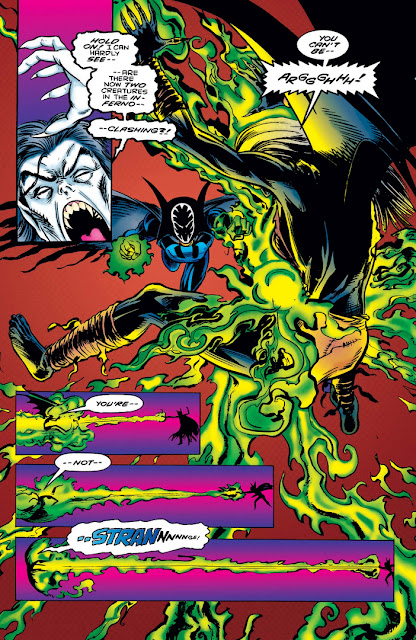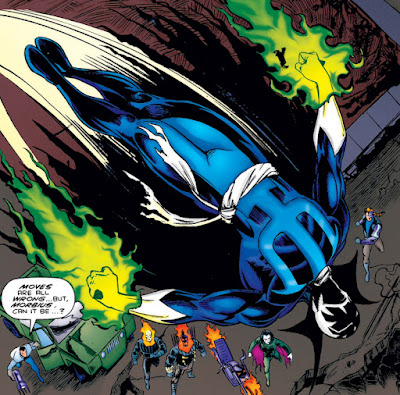It was only when I began giving some thought to looking into the final appearance of Dr. Donald Blake in the 1966-96 Mighty Thor title that I came to realize the can of worms I was prying open. To fully understand the situation, let's look back to November of 1968, where Blake, plagued with doubts of his own identity, wonders aloud about whether or not he's truly real; and if so, if his transformation into the manifestation of Thor meant that there was another God of Thunder who is unaccounted for.
In answer, Odin appeared to Blake and explained that, in order to teach his prideful son Thor the lesson of humility, Thor was sent to Earth in the guise of a mortal man, bereft of any memory of himself as Thor and, upon arrival, believing himself instead to be a student at a medical college and introducing himself as "Donald Blake." ("The name sounded so right... so proper... I was strangely unaware that I had never known of it before!") Meanwhile, Odin placed Thor's hammer (in cane form) in a cave in Norway, where Blake would discover it when he had fully learned the lesson Odin wished to impart.
In reality, then, Blake had always been Thor, while it was Blake who was, as he posited, "a myth...a casual creation of all-wise Odin," an enchantment which remained in effect even after its original purpose had been fulfilled. And yet... the same scene today has disturbing undertones. As we would learn much later, what Blake didn't realize was that he was operating under a misconception, unaware that Odin was carrying out a plan within the plan he disclosed.
As we explore the whys and wherefores of this story, there are three things you should know going in:
- The Donald Blake who attended State College was no facade but, in actuality, the true, mortal-born Donald Blake.
- The Donald Blake pictured in the above scene was a creation not of Odin, but of Thor.
- Shortly after Thor reappeared and routed the Stone Men, the real Blake's life was abruptly ended by involuntary manslaughter at the hand of an Asgardian.

















































